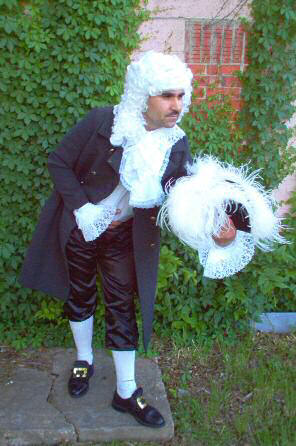Classical(neo)

In general, classical movements occurred in ancient Greece and Rome. However, we will focus on the 1600’s and 1700’s in France, England (neoclassical) and Germany. In the 1600’s waist coats, under-knee length coats and loose knee-length trousers replace tight padded breeches. Women were many petticoats instead of farthingales under their gowns. Startling three-quarter-length sleeves with gloves were worn. High headdresses or hairdos laced with jewels and other adornments were common. In the late 1600’s women were bustle gowns. The men often wore high boots, swords on a sash that hung over the shoulder, fancy plumed hats with long hair or wigs and shoes with heels trimmed with bows or buckles. Flat collars of linen or lace replaced the stiff ruff. Scarf-like neckwear for men with huge curled periwigs were worn. In the late 1700’s men’s clothes were comparatively plain. Bicorns and top hats replace tricorns. There was less color and ornamentation in general. For ladies, lightweight cotton dresses, sandals, shorter, curled hair, wide-brimmed hats, bonnets, lower necklines and higher waistlines existed.
